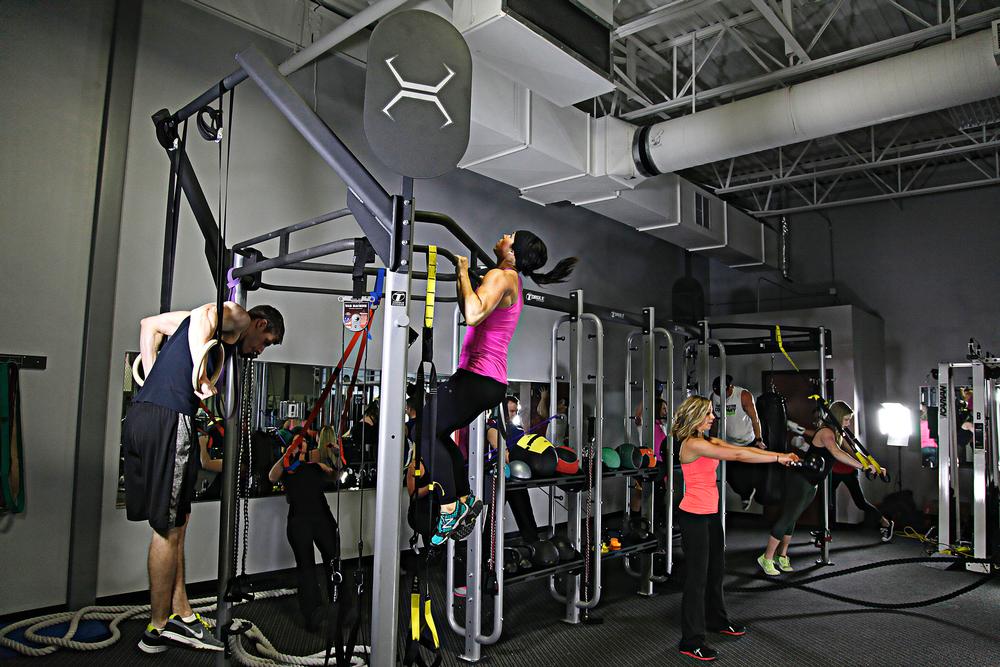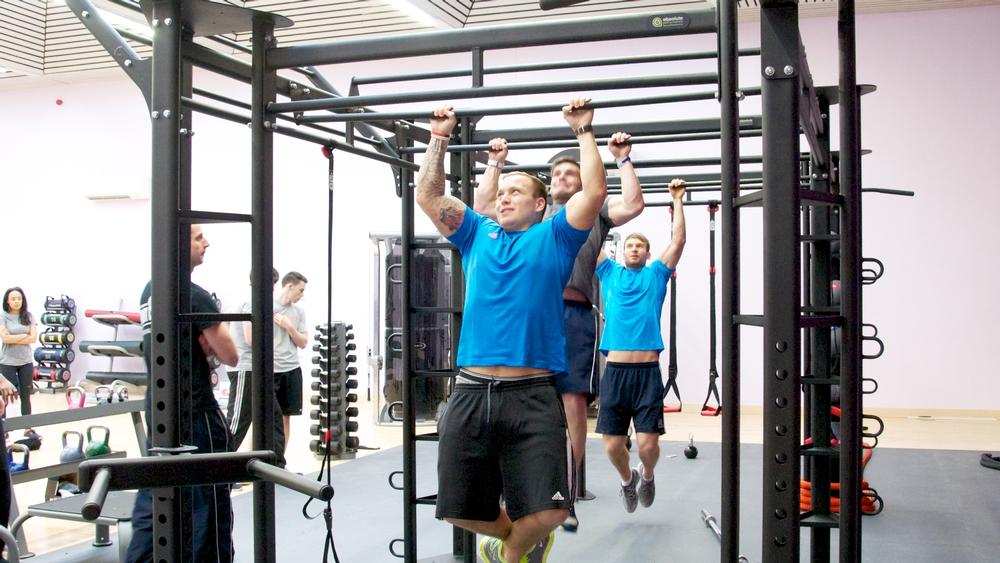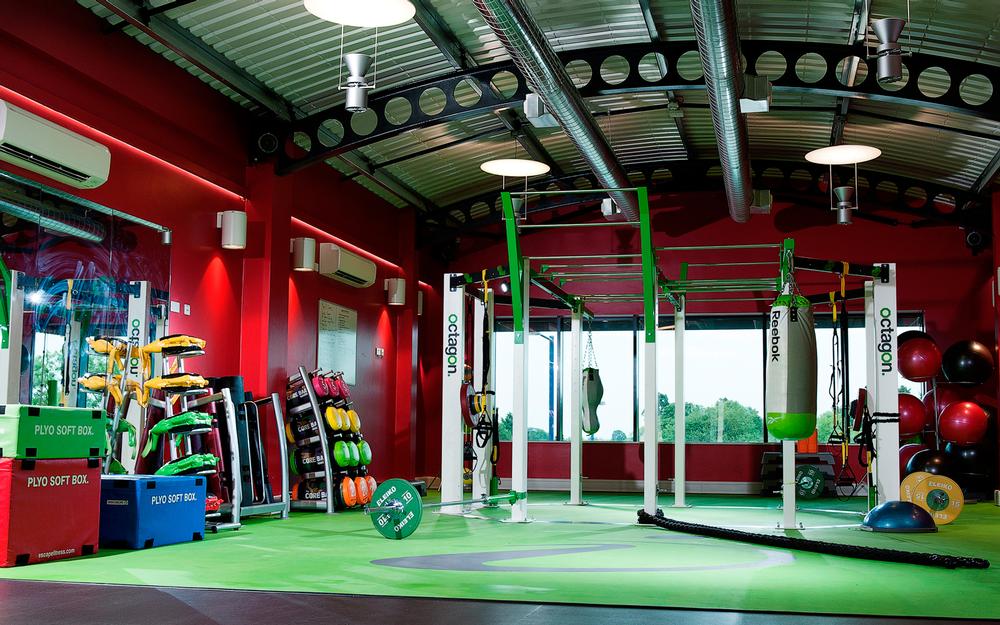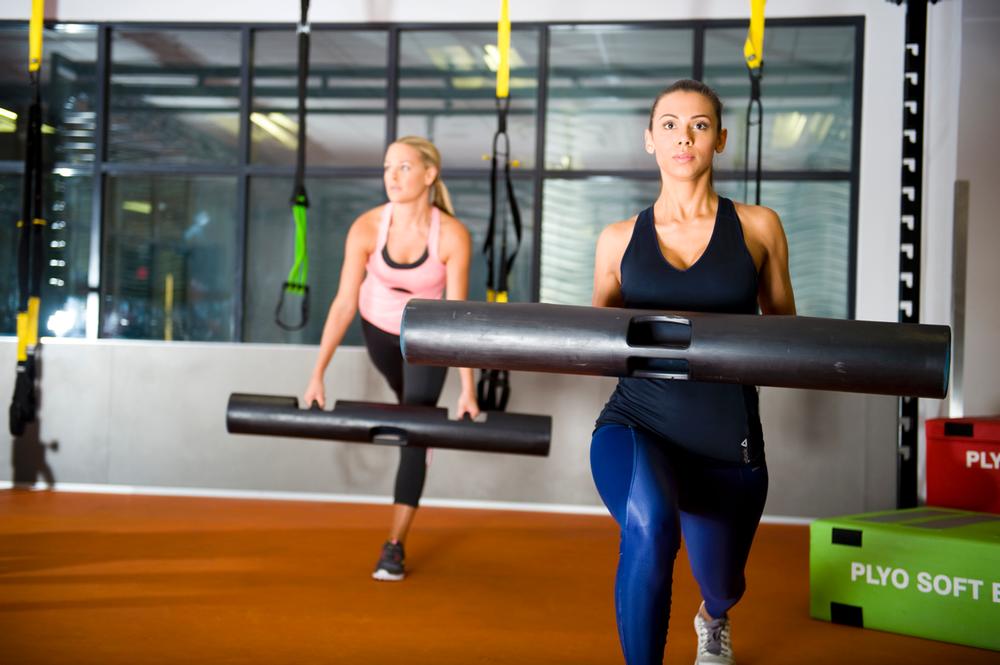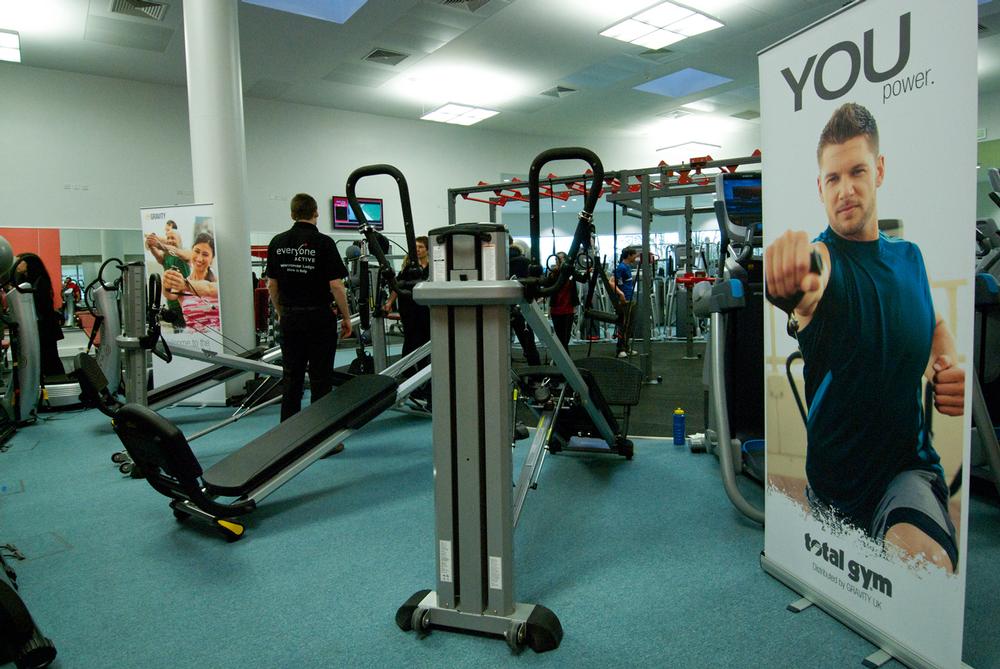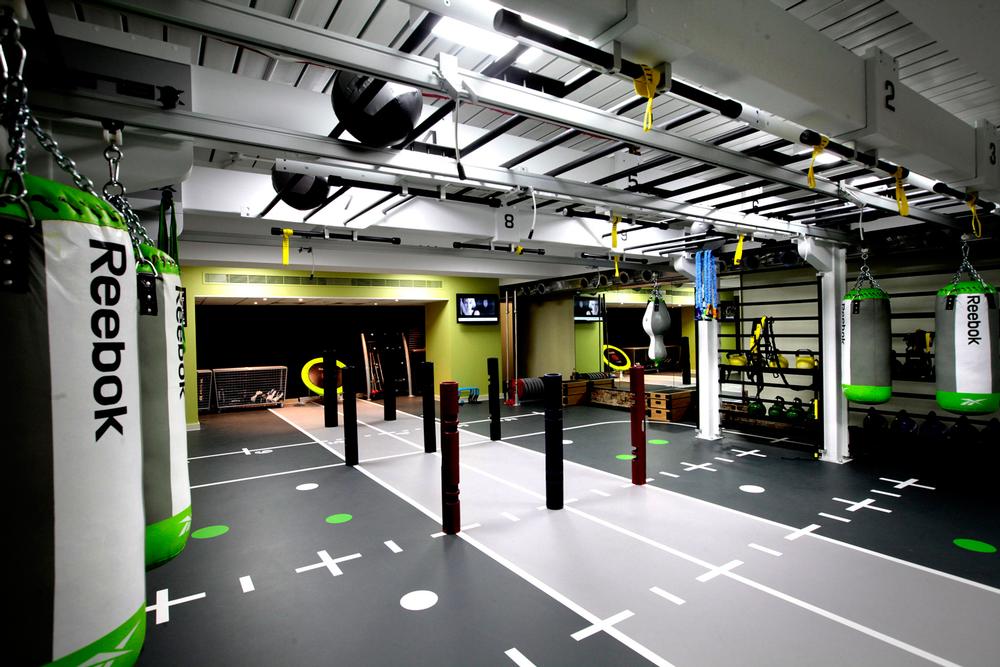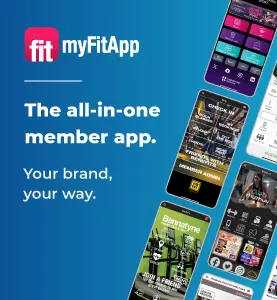According to Rick Crawford, national fitness and wellbeing lead at Nuffield Health: “There’s no denying that there’s a growing trend in our industry, with more and more members with all types of goals incorporating functional training into their programmes.”
As a result, gyms are increasingly converting gym floor space into functional zones. For Physical Company, August is normally the quietest month of the year; this year it was the third best month in its history, says sales and marketing manager John Halls: “And it’s all functional kit we’re selling. It’s only a matter of time before everyone converts more space to functional zones.”
Nuffield Health already has designated functional areas in all 65 sites, with the number of clubs offering functional frames now up to 29. Everyone Active also offers functional equipment at all 90 of its leisure centres, with training rigs at selected larger sites. And it’s not only the upper- and mid-market clubs that are tapping into this trend: budget operator Xercise4Less has functional zones of varied sizes in every site.
Freedom Leisure is another operator investing in functional training areas. Richard Merrick, group fitness and wellbeing manager, says: “We expect all our gyms to eventually have such areas, to be rolled out gradually as we continue to invest in our facilities. Functional equipment zones mark the first real step change in the evolution of gym design.”
Return on investment
But for such widespread investment, there must be significant rewards for the operator. Fusion Lifestyle is one operator currently going through the decision-making process, deciding where and how to invest in functional zones across its estate.
“The primary value for us is in customer retention,” says Darren Anderson, group fitness manager. “A functional zone offers a new way to train and adds variety to members’ fitness regimes – something customers tell us is really important in keeping them motivated. It also helps drive interaction between instructor and customer, which can generate a more vibrant atmosphere on the gym floor.”
Michelle Bletso, group fitness development manager at Everyone Active, believes such zones offer “variety of training, introduction of small group training and PT, and ‘wow’ factor for increased sales – but functional zones are also great fun for adolescents and our GP referral market”. She adds: “Return on investment is also something we would expect from these areas.”
Everyone Active is not alone in seeking a financial return from chargeable sessions in its functional zones, offering both group and one-to-one sessions. Functional zones at Nuffield Health are used “extensively by personal trainers with paying clients, and physiotherapists with patients,” says Crawford. “We also offer some paid-for small group training sessions, as well as larger group training sessions that are included on the standard class timetable at no additional cost.”
But across the sector there’s a range of approaches in evidence when it comes to group classes in functional zones – specifically the question of inclusive versus chargeable use. Use of all functional areas at Fitness First is included in the membership, for example, with “no extra cost classes or instruction (outside of PT) in any of our facilities,” says David Perrin, Fitness First UK’s fitness product manager.
Matthew Januszek of Escape Fitness says: “As long as you nail your colours to the mast and make it clear what your proposition is, then either could be a success depending on your model.”
Boosting PT
Suppliers are also keen to underline the potential for increased sales of PT and group classes off the back of a functional zone. Januszek believes “most trainers know a great functional area is a golden ticket to make more money, leading to a surge in members turning to PT”.
And Halls adds that “simple gym access isn’t really enough any more, so operators are looking for new models to give members the opportunity to pay for better training”.
Freedom Leisure has had great success with a functional zone installed at K2 Crawley in September 2012. “To encourage usage, we offered a month of free 20-minute express workouts. Over 100 people participated in these sessions and our retention software shows that, in the 28 days after the session, they visited the gym more frequently. PT revenue increased by 39 per cent in the six months following the installation,” says Merrick.
And Escape recently installed a functional training space for One Leisure St Ives, with an immediate impact on PT sales. “In the first four months since the new functional training area was installed, we’ve achieved 80 per cent of our entire PT business from last year,” says Ollie Ritch, Impressions fitness consultant and personal trainer.
Push or pull?
It’s clear that operators in different sectors of the industry are investing – but is this being driven by the consumer or the operator? GYMetrix’s Rory McGown cites “extremely low usage figures for functional equipment… almost zero in many cases. It’s a push trend, not a pull trend, driven by fitness club operators and suppliers rather than by members”.
Putting a more positive spin on a similar ‘push not pull’ observation, Absolute Performance MD Tony Buchanan adds: “The change is being led by individuals who work for operators and believe in the benefits of the training, not purely by business people looking for opportunities.”
So how can functional training be promoted to turn it into a ‘pull’ trend, with members fully embracing the new training opportunities it offers?
Many operators and suppliers stress the importance of a very proactive approach to instructor and member education. Perrin sees that the “success of a functional zone is not determined by size, but by the education held within the zone”.
Januszek agrees, saying: “Although members now ask for, and even expect, functional training areas, the truth is the vast majority still don’t know how to train properly in them. This is a huge opportunity for operators, as this lack of understanding presents an opportunity for PTs to offer a more valuable service to members.”
“We must make sure that staff are continually being educated with the latest research available, and are aware of the potential risks associated with the use of this type of equipment,” adds Fusion Lifestyle’s Anderson. “Staff supervision is very important, as is a thorough induction process for customers, which focuses on technique.”
Indeed, systematic member inductions and introductions to new functional equipment are already widely identified as the key to a successful installation. “As well as inductions and group classes, we’ve created a member journey with the Everyone Active Online platform and programme cards for functional training,” says Bletso.
Fitness First has also taken a technological approach to engaging members. “To allow more independent use, we installed interactive walls in our recently refurbished clubs,” says Perrin. “These have touchscreen technology that allows members to call up exercises based on their goals. A short video will display the exercise, giving the member complete control over their learning.”
Design and layout
Location in the club is also key to success. “Zones are often placed in the most visible open part of the gym, so they can be very intimidating even to regular gym users,” says McGown.
“You have to be careful not to isolate members who don’t want to be in a functional zone,” adds Halls. “The more hardcore CrossFit-type club is very attractive to some people, but many gym-goers find that kind of training, and the atmosphere created by the club design and equipment that goes with it, quite intimidating – even scary.
“There are plenty of products and design options available to give the benefits of functional training in a more ‘friendly’ environment. Total Gym, for example, offers a more inclusive journey for the functional beginner without compromising on results for all levels.”
Design is clearly a huge factor in any functional zone. Januszek explains: “It’s very important that the area is an ‘experience’. Delivering the correct look and feel, through lighting and sound as well as colour, all contributes to the design of a space.”
Space requirements
Even with a modest functional zone, floor space is always at a premium and there’s opportunity cost to any area that doesn’t pull its weight.
While a functional area can be built within nearly any space that’s available – in terms of training rigs, Buchanan says “a 5m x 2m rig needs 7m x 4m space, for around 10–12 people training at a time” – opinions vary on what really constitutes a fully-fledged functional zone.
“I think, as long as you have enough room to run a group of six in a small group training environment, it can be successful,” says Bletso. “Any smaller and it really becomes more of a PT area than a programmed zone.”
“As a rule of thumb, 10–15 per cent of your gym floor works well,” says Crawford. Physical Company, meanwhile, reports seeing large operators looking to expand dedicated functional training space from 15–20 per cent to around 30 per cent of their gym floor. Interestingly, Xercise4Less takes the view that a club “needs to be at least 30,000sq ft to warrant taking the space out to put a functional zone in with the relevant equipment”.
So is it worth allocating this sort of space? Anderson believes so: “The demand for cardiovascular equipment and fixed resistance machines is becoming less of a focus, so it makes sense that we would prioritise space for functional training.”
Crawford agrees with this reapportioning of space. “Taking a fresh look and potentially reducing the volume of fixed resistance equipment, or switching for multi-purpose equipment like cables or dual functional fixed resistance such as combined leg curl and leg extension fixed resistance machines, can be a very effective way to create the space needed.”
The right demographics
But this decision is clearly site-specific, and influenced by the degree to which the trend is ‘pull’ versus ‘push’. Although clearly a key development in the changing face of health and fitness facilities around the UK, it’s important to note that not every club or centre is jumping on the bandwagon.
Freedom Leisure’s Merrick explains: “We need to be conscious of what the member has had access to up until that point in time. If there has been very little functional equipment in place, then it would be unrealistic to suddenly impose a whole new way of training on our members.
“Summerfields Leisure Centre in Hastings recently benefited from £160k of refurbishment work to the gym and studios, for example, but we took the decision that functional training equipment wasn’t the right investment for this facility.
“The membership is approximately 70 per cent female, with members choosing classes as the primary way of exercising. The majority of gym users at this site are new exercisers, so we designed the gym to be as unintimidating and easy to use as possible.”








